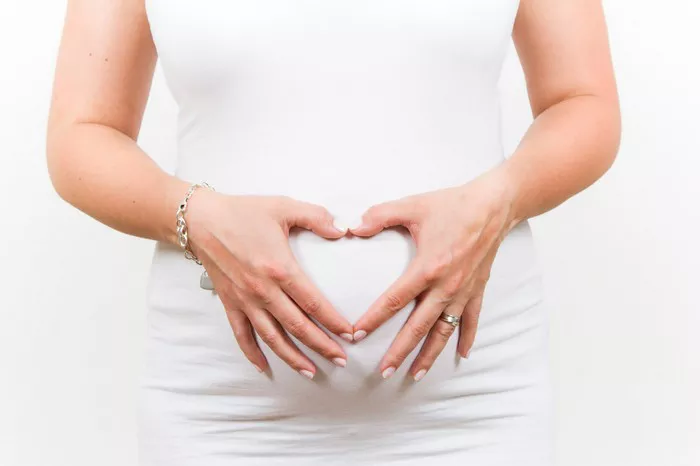The menstrual cycle is a complex, intricately orchestrated process that prepares a woman’s body for the possibility of pregnancy each month. Typically lasting around 28 days, although it can vary from person to person, the menstrual cycle consists of several distinct phases.
Menstruation: The Start of the Cycle
The cycle begins with menstruation, where the lining of the uterus sheds in the absence of a fertilized egg. This phase generally lasts around 3 to 7 days and marks the start of the follicular phase.
Follicular Phase: Building Towards Ovulation
Following menstruation, the body gears up for ovulation during the follicular phase. This phase is characterized by the development of follicles in the ovaries, each containing an immature egg. As the follicles grow, they release estrogen, which stimulates the thickening of the uterine lining in preparation for a potential pregnancy.
Ovulation: The Peak of Fertility
Ovulation typically occurs around midway through the menstrual cycle, approximately 14 days before the start of the next period. During ovulation, one mature egg is released from the ovary and travels down the fallopian tube, where it may be fertilized by sperm. Ovulation marks the peak of a woman’s fertility, with the highest likelihood of conception occurring during this time.
Luteal Phase: Preparing for Pregnancy or Menstruation
Following ovulation, the luteal phase begins. During this phase, the empty follicle left behind after ovulation transforms into a structure called the corpus luteum, which produces progesterone. This hormone helps maintain the uterine lining in case of pregnancy. If fertilization does not occur, the corpus luteum breaks down, progesterone levels drop, and menstruation begins anew, signaling the start of a new cycle.
Fertility and Ovulation
Understanding the connection between ovulation and peak fertility is crucial for those trying to conceive or avoid pregnancy. Ovulation is the key event in the menstrual cycle when a woman is most fertile, as it is the prime window for egg fertilization by sperm.
Identifying Signs of Ovulation
Several methods can help identify ovulation, including tracking changes in cervical mucus, monitoring basal body temperature, and using ovulation predictor kits. Cervical mucus becomes thinner, clearer, and more slippery around ovulation, providing an environment conducive to sperm survival and movement. Basal body temperature, the body’s lowest resting temperature, typically rises slightly after ovulation due to increased progesterone levels. Ovulation predictor kits detect the surge in luteinizing hormone (LH) that precedes ovulation, indicating that the egg will be released soon.
Less Fertile Phases
While ovulation marks the peak of fertility, there are times during the menstrual cycle when a woman is less likely to conceive. Understanding these less fertile phases can be valuable for both those trying to conceive and those seeking to avoid pregnancy.
Menstruation: Unlikely but not Impossible
Although the chances of conception during menstruation are lower compared to other phases of the menstrual cycle, it is still possible under certain circumstances. Sperm can survive in the female reproductive tract for up to five days, so if intercourse occurs towards the end of menstruation and ovulation follows shortly after, pregnancy may still occur.
Post-Ovulation: Decreasing Fertility
Following ovulation, the window of fertility begins to close as the egg has a limited lifespan of around 12 to 24 hours. Once the egg is no longer viable, the chances of conception decrease significantly until the start of the next menstrual cycle.
Tracking Methods
Various methods can help track the menstrual cycle and predict less fertile days, providing valuable information for family planning purposes.
Calendar Tracking
Calendar tracking involves recording the start and end dates of each menstrual period to identify patterns and predict future ovulation and fertile windows. While this method is straightforward, it may not be accurate for individuals with irregular cycles.
Basal Body Temperature (BBT) Monitoring
Basal body temperature monitoring involves taking your temperature every morning before getting out of bed and charting these temperatures over time. A rise in basal body temperature indicates that ovulation has occurred, helping pinpoint the most fertile days in the menstrual cycle.
Hormone Level Monitoring
Ovulation predictor kits and fertility monitors measure hormone levels in urine or saliva to predict ovulation. These tests detect the surge in luteinizing hormone (LH) that precedes ovulation, providing a reliable indicator of impending ovulation.
Factors Affecting Fertility
Several factors can influence a woman’s fertility, affecting the likelihood of conception during the menstrual cycle.
Age
Age plays a significant role in female fertility, with fertility declining gradually in the late 20s and more rapidly after the age of 35. Advanced maternal age is associated with decreased egg quality and a higher risk of pregnancy complications.
Health Conditions
Certain health conditions, such as polycystic ovary syndrome (PCOS), endometriosis, and thyroid disorders, can impact fertility by affecting ovulation or the reproductive organs. Seeking medical treatment for underlying health issues can improve fertility outcomes.
Lifestyle Choices
Lifestyle factors, including diet, exercise, smoking, alcohol consumption, and stress, can influence fertility. Maintaining a healthy lifestyle, including a balanced diet, regular exercise, and stress management, can positively impact fertility.
Contraception and Family Planning
Understanding the menstrual cycle and fertility patterns is essential for effective contraception and family planning decisions.
Contraception
Knowledge of fertile and less fertile phases of the menstrual cycle can help individuals make informed decisions about contraception methods. Hormonal contraceptives, such as birth control pills, patches, and hormonal IUDs, work by suppressing ovulation and altering the cervical mucus to prevent sperm from reaching the egg. Barrier methods, such as condoms and diaphragms, provide physical barriers to prevent sperm from fertilizing an egg.
Family Planning
For those trying to conceive, tracking the menstrual cycle and identifying fertile days can maximize the chances of conception. Timing intercourse to coincide with ovulation increases the likelihood of sperm meeting the egg, optimizing the chances of pregnancy.
Medical Advice Disclaimer
While understanding the menstrual cycle and fertility patterns can provide valuable insights, it is essential to consult healthcare professionals for personalized medical advice. Every individual is unique, and factors such as medical history, underlying health conditions, and lifestyle choices can impact fertility outcomes. Healthcare professionals can offer guidance tailored to individual needs and circumstances, helping individuals make informed decisions about reproductive health and family planning.
Comclusion
In conclusion, understanding the intricacies of the menstrual cycle and fertility patterns empowers individuals to make informed decisions about contraception, family planning, and reproductive health. By tracking the menstrual cycle, identifying fertile and less fertile phases, and considering factors that influence fertility, individuals can take proactive steps to achieve their reproductive goals while prioritizing their overall health and well-being.
























